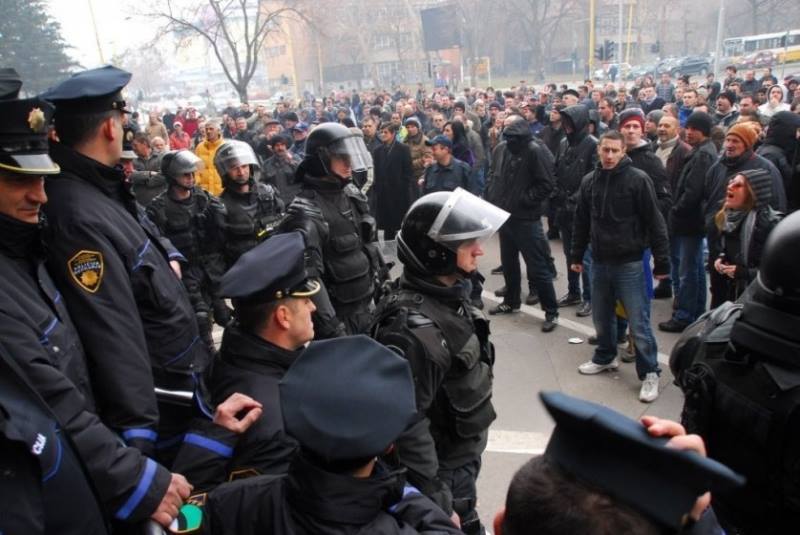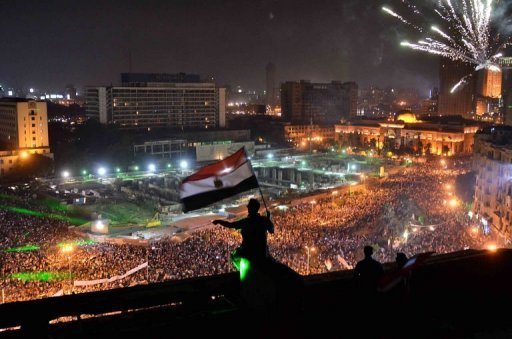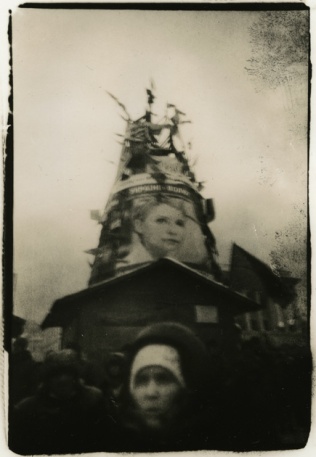
Freedom is my nation
πηγή: http://www.crimethinc.com/index.html
The past two weeks have seen a fierce new protest movement in Bosnia, commencing with the destruction of government buildings and continuing with the establishment of popular assemblies. Unlike the recent conflicts in Ukraine, this movement has eschewed nationalistic strife to focus on class issues. In a region infamous for ethnic bloodshed, this offers a more promising direction for the Eastern European uprisings to come.
To gain more insight into the protests, we conducted two interviews. The first is with a participant in Mostar, Bosnia, who describes the events firsthand. The second is with a comrade in a nearby part of the Balkans, who explains the larger context of the movement, evaluating its potential to spread to other parts of the region and to challenge capitalism and the state.
Interview with a Participant
Give us a brief timeline of the important events.
On Wednesday, February 5, workers from several local companies that were destroyed by post-war privatization organized another protest in front of the Cantonal Government Building in Tuzla. Those workers have been protesting peacefully for a decade, organizing strikes and hunger strikes—which were very common in Bosnia until this month—but nobody listened. For just about the first time in post-war Bosnia, young people organized over social networks to express solidarity with desperate workers. Almost 10,000 people supported their protest on Thursday, February 6; that was when the first clashes with the police happened, and the first attempt to enter the government building.
Tuzla, February 5, 2014
On Friday, February 7, more than 10,000 people gathered in the post-industrial city of Tuzla in front of the Cantonal Government building, asking for the Prime Minister’s resignation. The Prime Minister arrogantly refused to resign. None of the officials came out to speak to them, so people broke through the police lines, entered the building, and burned it down.
On the same day, solidarity protests with the workers of Tuzla were organized in almost all the industrial towns of Bosnia. News from Tuzla spread fast; people in Bihać, Sarajevo, Zenica, and Mostar felt that this could be a moment to try to win a change. After the police attacked protesters in Sarajevo, during which some of the people were pushed down and thrown into the river Miljacka, the crowd fought back, forcing back the police and burning down the building of the Cantonal Government, as well as the buildings of the Presidency (including the state flag), the municipality of Sarajevo Center, and several police cars and vans. In Bihać, people attacked the building of the Cantonal Government and smashed it up. The same thing happened in Zenica.
Everyone was anticipating the events in the ethnically divided city of Mostar. More than 4000 people gathered in front of the Cantonal Government, demanding resignations. Soon, the first rocks were thrown, to great applause. From that moment, more and more people were putting t-shirts, balaclavas, masks—whatever they could find—over their faces; without any police resistance, within a few minutes, the building was on fire. Then people went to the City Hall and burned it down, as well as the building of the cantonal Parliament, Mostar Municipality, and the offices of two leading nationalist political parties that have ruled this city since 1991. That made quite a statement.
Protests are still going on, and people have organized themselves in plenums [assemblies]. Four cantonal governments have been forced to resign. Two of them are negotiating with plenums about forming governments of people who are not active members of any political parties. The authorities are fighting back hard—spreading fear of another civil war, arresting people, beating them, pressing charges for terrorism and attack on constitutional order…
Tuzla, February 7, 2014
Who participated? How and why did the protests spread? What limits did they reach?
The participants were from all social groups. Workers, unemployed, pensioners, many young people, demobilized soldiers, activists, football fans, human rights activists, parents with their children…
The people of Bosnia and Herzegovina are the poorest in Europe. Unemployment is over 50%; among young people, it is over 70%. At same time, Bosnian politicians are among the best paid in southeast Europe, and the most corrupt. The healthcare system is the worst in Europe, and social safety nets are almost nonexistent. The society that was one of the most egalitarian in Europe 25 years ago now has a huge social gap.
Capitalism and the process of privatization have completely destroyed the local economy; all the big factories and companies that were saved during the war have been privatized and shut down. All the wealth is concentrated in the hands of a few. There is no production in Bosnia any more, only import. The authorities are taking bigger and bigger loans from the IMF, knowing that they have no way of paying them back—so we can expect to be forced to privatize Bosnian Telecom and Electro-energetic system, the last viable pubic companies.
Continue reading →



